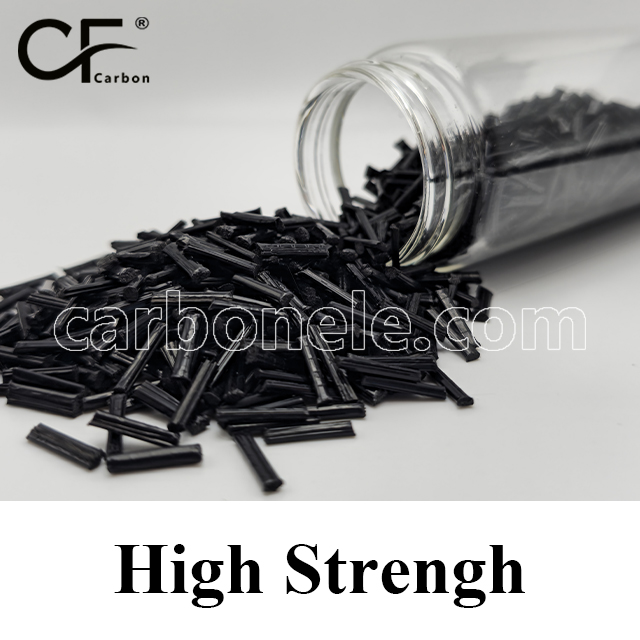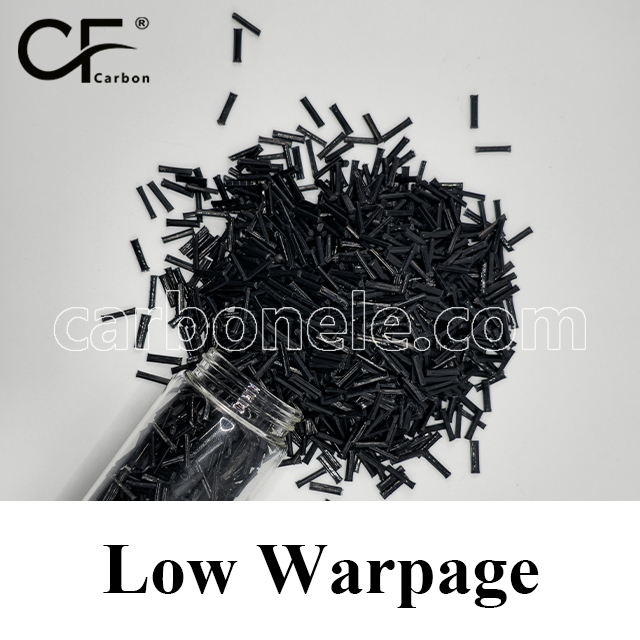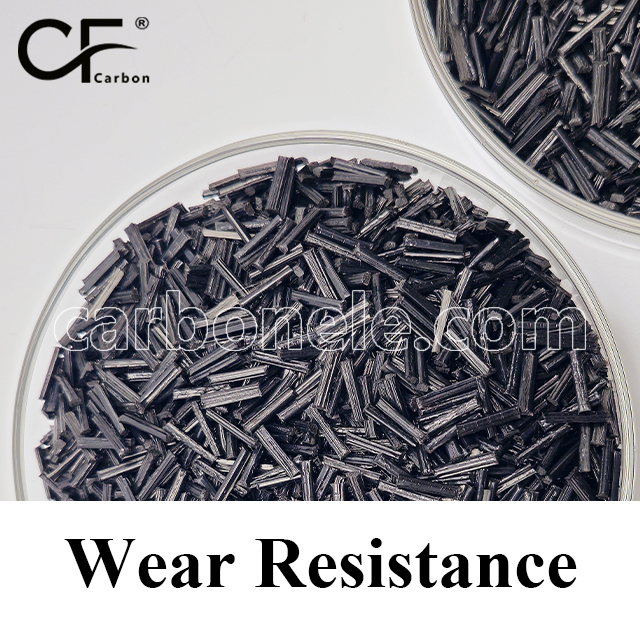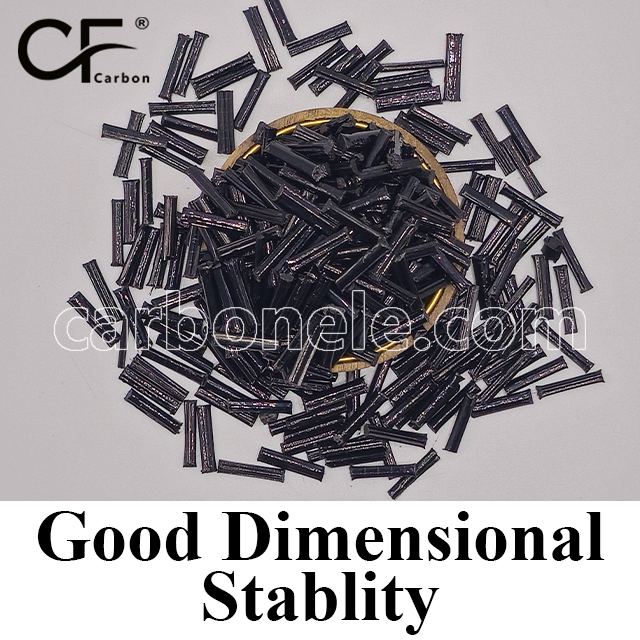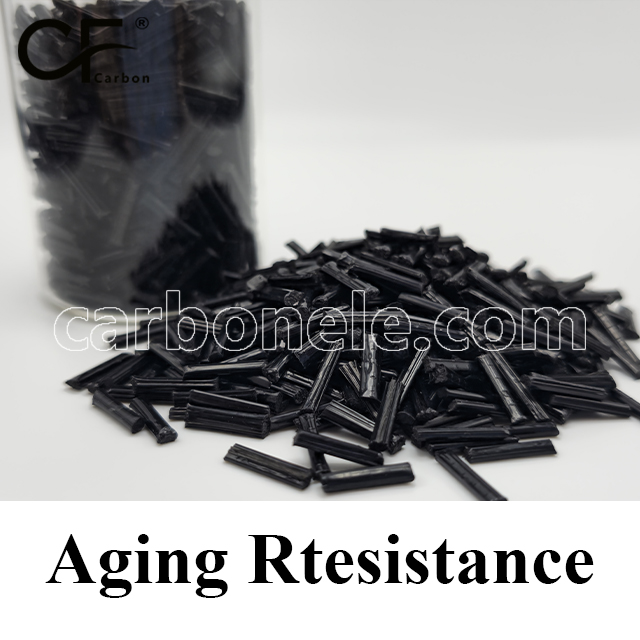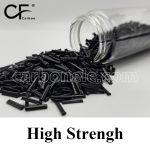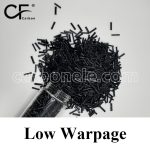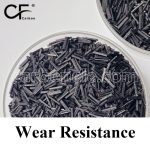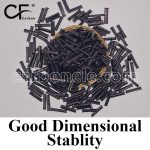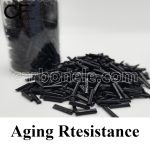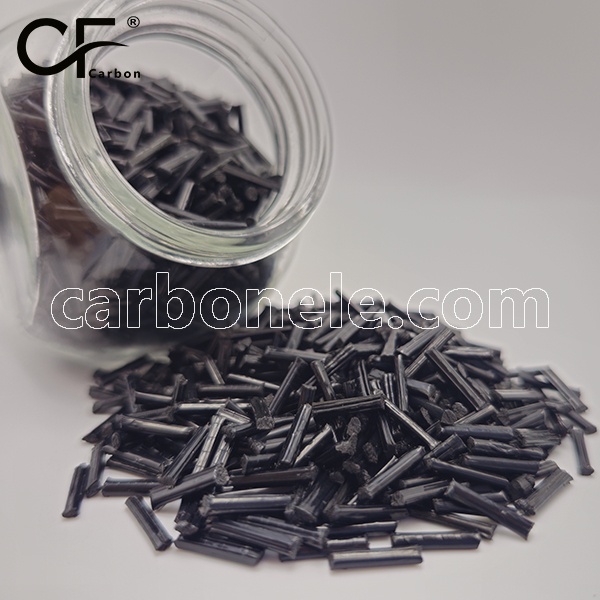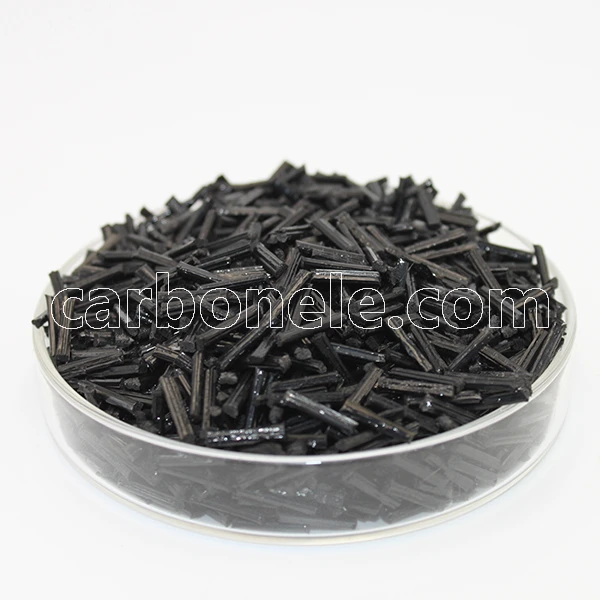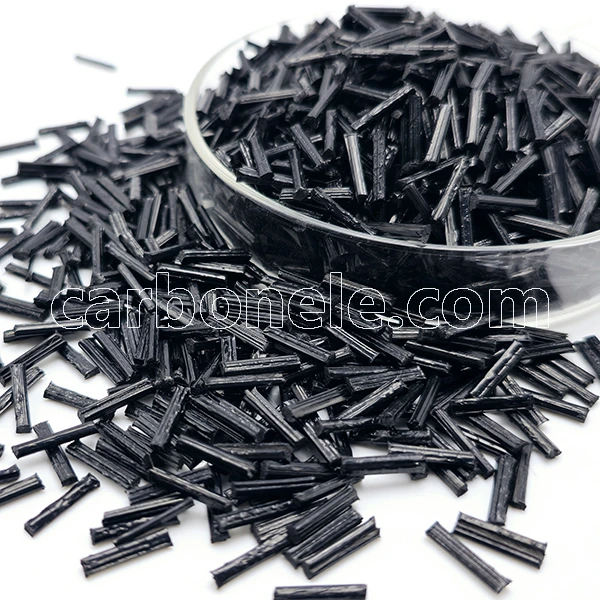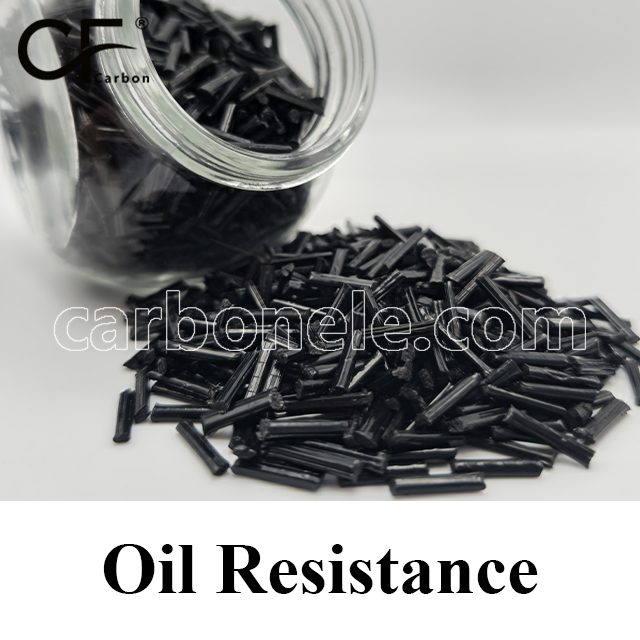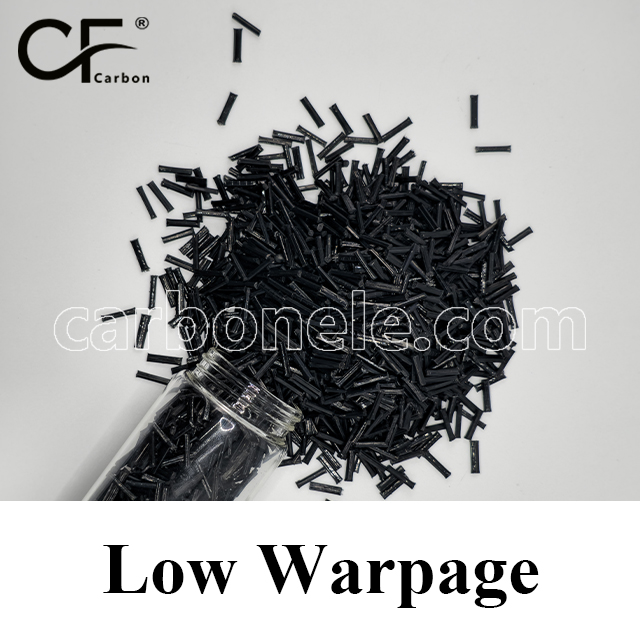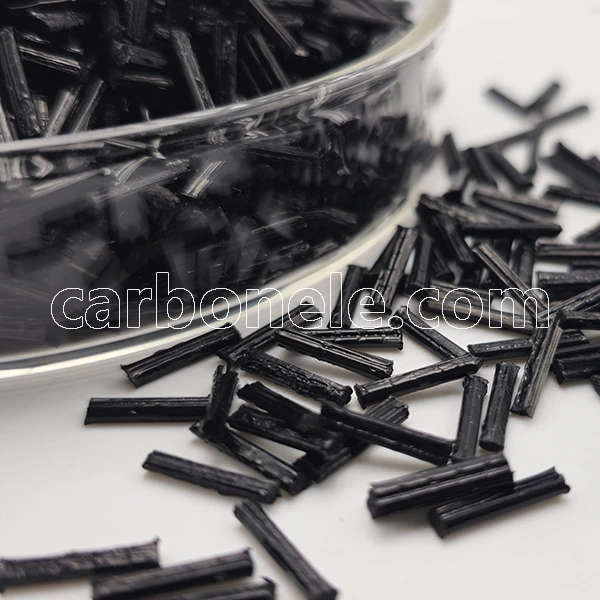
PA12-LCF50 composite materials for aerospace applications
PA12-LCF50 is a high performance thermoplastic composite reinforced with 50% long carbon fiber, offering extreme stiffness, tensile strength, and thermal resistance. Built on a PA12 base, it maintains excellent chemical resistance and low moisture absorption, making it ideal for replacing metals in structurally demanding, high heat environments such as automotive, aerospace, and industrial applications.
- Model number: PA12-LCF-BCA5
- Matrix Resin: Polyamide12 (Nylon12) (PA12)
- Reinforcing Filler: Carbon fiber
- Appearance: Granules
- Grade: Injection/extrusion grade
- Packaging: 25kgs/bag
PA12-LCF50 | 50% Long Carbon Fiber Reinforced Polyamide 12
PA12-LCF50 is an ultra-rigid, high-performance thermoplastic composite that merges the excellent ductility, chemical resistance, and low moisture absorption of Polyamide 12 (PA12) with 50% long carbon fiber reinforcement. This maximum fiber loading delivers extraordinary mechanical and thermal capabilities—providing a lightweight yet exceptionally strong alternative to metal in the most demanding structural applications.
Designed for high-load, high temperature environments, PA12-LCF50 offers unmatched stiffness to weight ratio, dimensional precision, and environmental resistance. It is optimized for automotive, aerospace, industrial, and advanced consumer applications that require peak mechanical stability and fatigue resistance.
Key Advantages of PA12-LCF50
Mechanical Strength
Carbon Fiber Content: 50% (Long carbon fiber)
Tensile Strength: ≥ 130 MPa
Flexural Strength: ≥ 170 MPa
Impact Strength: ≥ 12 kJ/m²
→ Maximized stiffness and structural integrity under heavy load and stress conditions.
Thermal Performance
Heat Deflection Temperature (HDT): ~180°C
Continuous Use Temperature: Up to 120°C
→ Retains form and performance in continuous high heat environments such as engine systems and industrial machines.
Environmental & Chemical Resistance
Moisture Absorption: Extremely low – critical dimensional control in wet, humid, or submerged conditions
Chemical Resistance: Excellent – unaffected by fuels, oils, greases, and corrosive agents
→ Maintains long term durability in thermally and chemically aggressive environments.
Processing Characteristics
Molding Methods: Injection molding, extrusion
Surface Finish: Matte with visible fiber structure – excellent dimensional consistency
Tooling Requirements: Hardened steel molds required; strict flow control needed to protect fiber integrity
Target Applications for PA12-LCF50
Automotive
Engine mounts, structural chassis reinforcements
→ Replaces aluminum or die cast metals in high load zones
Aerospace
UAV structural arms, lightweight mountings
→ Delivers weight savings without sacrificing rigidity or performance
Industrial Systems
High-load machine parts, precision guide rails
→ Durable and fatigue resistant under repetitive stress
Electronics & Power Devices
Rigid enclosures, mounting plates
→ Maintains strength in vibration- and heat prone environments
Consumer & Sports Equipment
E-bike components, impact frames
→ Optimized strength to weight ratio for performance critical products
Performance Summary Table
| Property | Value / Description |
|---|---|
| Carbon Fiber Content | 50% (Long Carbon Fiber) |
| Tensile Strength | ≥ 130 MPa |
| Flexural Strength | ≥ 170 MPa |
| Notched Impact Strength | ≥ 12 kJ/m² |
| Heat Deflection Temp. | Approx. 180°C |
| Long Term Service Temp. | Up to 120°C |
| Water Absorption | Extremely Low – maintains dimensional control |
| Chemical Resistance | Excellent – fuels, oils, solvents |
| Wear Resistance | Very High – ideal for friction-loaded parts |
| Processing Methods | Injection molding, extrusion |
| Surface Finish | Matte – visible fiber texture common |
| Dimensional Stability | Exceptional – precision for structural and load bearing use |
If you want to get more information about PA12-LCF50, you can vist our Youtube.
Thermal Stability of PA12-CF
PA12-CF composites exhibit significantly enhanced thermal stability compared to standard PA12 due to the incorporation of carbon fiber. As the carbon fiber content increases, the material's ability to withstand elevated temperatures improves, allowing it to maintain mechanical properties in high-temperature environments. This enhanced heat deflection temperature makes PA12-CF suitable for applications that require reliable performance under thermal stress. The superior thermal stability ensures that components made from PA12-CF can operate effectively in demanding conditions, thereby expanding their usability across various industries, including automotive and aerospace. The combination of lightweight characteristics and improved heat resistance positions PA12-CF as an excellent choice for applications that prioritize both strength and thermal performance.
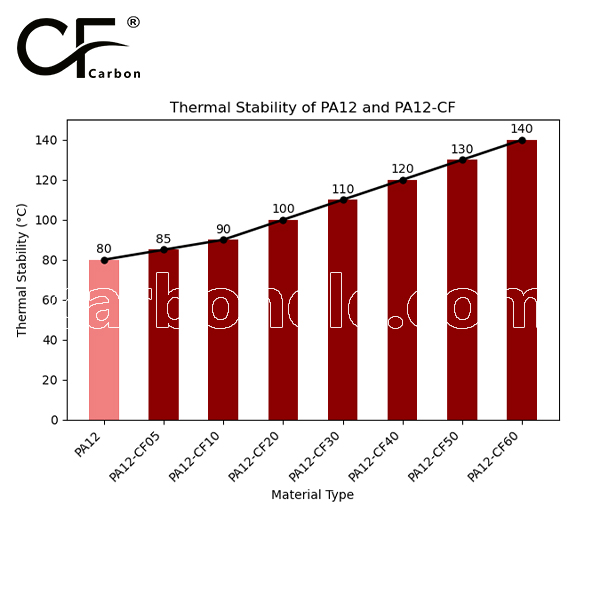
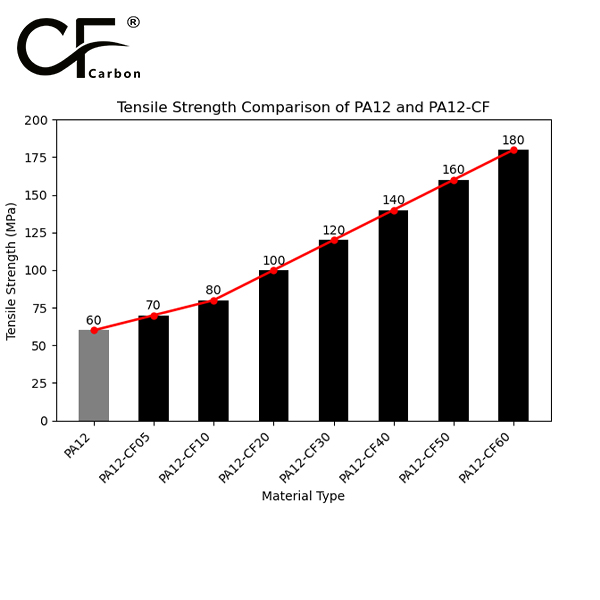

Frequently Asked Questions
Carbon (Xiamen) New Material Co., Ltd. aims to provide buyers with "one-stop" worry-free high-quality services. Here you can find all information about carbon fiber engineering plastics. If you still have questions, please send us an email for consultation!
-
How can I contact the manufacturer of a product that interests me?
When you find a product you are interested in, you can contact the manufacturer directly by sending an email and we will get back to you as soon as possible.
-
How do I find the products that interest me?
All you need to do is enter the keyword, product name in the search window and press the Enter key on your keyboard. Your search results page will then be displayed. You can also search within the product category pages on the home page. Each category is divided into subcategories, allowing you to refine your search and find products that interest you.
-
Where will I find a buying guide?
Please contact our after-sales service directly and we will provide you with a comprehensive operating guide.
-
What are CF Reinforced Thermoplastic Composites?
CF Reinforced Thermoplastic Composites are materials where carbon fibers are incorporated into a thermoplastic matrix. They combine the strength and stiffness of carbon fibers with the processability and recyclability of thermoplastics. For instance, they are used in automotive parts like bumper beams.
-
What are the benefits of CF Reinforced Thermoplastic Composites over traditional composites?
The key benefits include faster production cycles, easier recyclability, and better impact resistance. They also offer design flexibility. An example is in the manufacturing of consumer electronics casings where complex shapes can be achieved more easily.
-
How are CF Reinforced Thermoplastic Composites processed?
Common processing methods include injection molding, extrusion, and compression molding. Injection molding is widely used for mass production. For example, in the production of small components for the medical industry.
-
What industries use CF Reinforced Thermoplastic Composites?
They are utilized in aerospace, automotive, medical, and sports equipment industries. In aerospace, they can be found in interior components. In the medical field, they might be used in prosthetics.
-
How does the carbon fiber content affect the properties of the composites?
Higher carbon fiber content generally leads to increased strength and stiffness but may reduce ductility. A moderate content is often balanced for specific applications. For example, a higher content might be preferred in structural parts of a race car.
-
What are the challenges in using CF Reinforced Thermoplastic Composites?
Challenges include higher material costs, complex processing equipment requirements, and ensuring uniform fiber dispersion. Issues with adhesion between the fibers and the matrix can also arise. An example is in achieving consistent quality in large-scale production.







